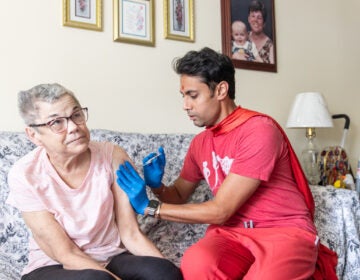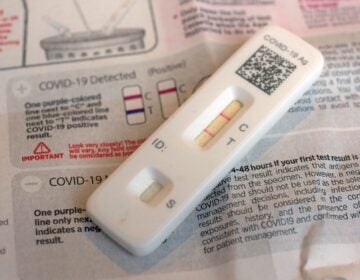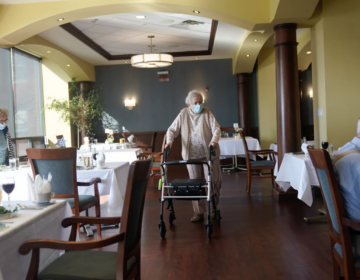Wolf offers clarification on his new plan to reopen Pa.
He noted, even when industries — and eventually counties — get the go-ahead to go back to work, that doesn’t mean daily life should go back to normal right away.

Gov. Tom Wolf. (Spotlight PA)
Are you on the front lines of the coronavirus? Help us report on the pandemic.
On Wednesday evening, Gov. Tom Wolf released his most detailed plans yet for allowing Pennsylvanians to return to work. But Thursday morning, he couched those plans somewhat, telling reporters that any decisions to reopen businesses would include a degree of subjectivity.
Wolf’s three-tiered system is color-coded.
Red designates the current situation, with a statewide stay-at-home order and only life-sustaining businesses allowed to be open. Yellow means that the stay-at-home order is lifted, and counties whose COVID-19 cases fall under a certain level can begin to let businesses with in-person operations reopen. Green means that nearly all restrictions are lifted, but businesses and individuals should still follow safety guidelines from the Centers for Disease Control and Prevention, like wearing a mask to go outside.
Wolf’s most specific criteria for a county moving from the red to yellow designation was that they report an average of fewer than 50 cases per 100,000 individuals over the course of 14 days. He said the state wouldn’t allow any significant changes until May 8.
By that measure, the hardest-hit county, Philadelphia — with a population of roughly 1.584 million people — would need to report an average of about 792 daily cases or fewer over 14 days in order to begin reopening. Over the past two weeks, the city has averaged about 343 cases per 100,000 people, which is nearly seven times higher than Wolf’s target.
The next hardest-hit county, Montgomery, has averaged roughly 159 cases per 100,000 over the past two weeks — more than triple the target.
Wolf didn’t say whether the state has estimated the length of time it will take those counties to begin getting back to normal. But he did say that even in counties that have far fewer cases, any decision to reopen will be flexible and based on the county’s specific circumstances.
“I’m laying out, the Department of Health is laying out, objective criteria that are not meant to be, ‘OK this is a hard and fast rule,’” Wolf said. “We’re going to have to make subjective decisions.”
He used the specific example of Erie County, which already would fit the criteria to reopen, but is in relatively close proximity to more populous cities like Pittsburgh and Cleveland and is sometimes a shopping destination for people who live in those cities.
“Erie County as a whole might have great numbers in terms of cases, but those numbers are based on a stay-at-home order, so that’s a fairly static picture,” he said. “If all of a sudden you change that and people are coming in from Cleveland, … all of a sudden the numbers in Erie start to look different.”
Wolf also said he would like testing to be a factor in decisions to reopen Pennsylvania’s counties, but that the state isn’t at the kind of capacity it would need to make informed decisions.
One of the exceptions to Wolf’s stay-at-home and business closure rules is construction, which he previously classified as a non-life-sustaining industry and ordered to mostly shut down.
The move drew the ire of legislative Republicans, who argued that construction was considered essential in other states, and that it could be accomplished using CDC social distancing guidelines.
On Thursday, Wolf said he would be allowing construction work of all kinds to resume May 1.
“The reason construction seems to be a reasonable, early place to start is because there’s low density and a lot of outside work in construction, especially at this time of year,” he said.
He noted, even when industries — and eventually counties — get the go-ahead to go back to work, that doesn’t mean daily life should go back to normal right away. He advised Pennsylvanians to keep limiting social interactions when possible, and to keep wearing personal protective equipment like masks for the foreseeable future.
WHYY is your source for fact-based, in-depth journalism and information. As a nonprofit organization, we rely on financial support from readers like you. Please give today.





![CoronavirusPandemic_1024x512[1]](https://whyy.org/wp-content/uploads/2020/03/CoronavirusPandemic_1024x5121-300x150.jpg)


